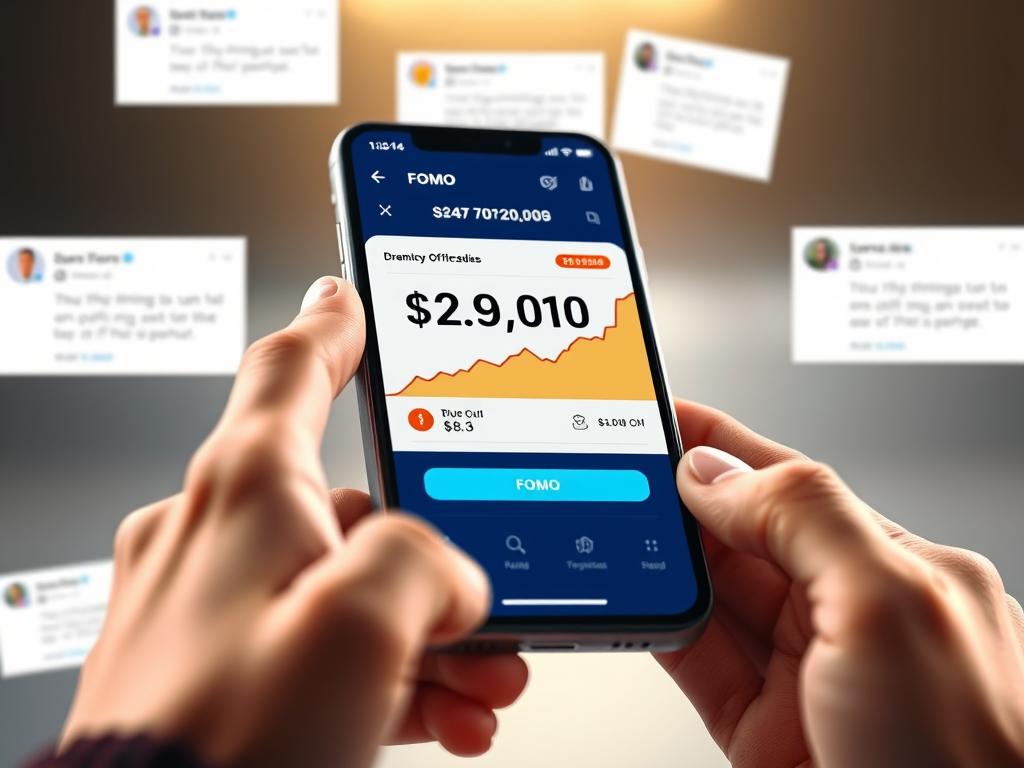The day I decided to jump into crypto investing, I was filled with excitement and dreams of financial freedom. Armed with nothing but enthusiasm and a few YouTube tutorials, I dove headfirst into the crypto ocean. Little did I know that my lack of preparation would cost me thousands of dollars and countless sleepless nights. If only someone had sat me down and shared these crucial lessons before I started. Today, I’m that someone for you – sharing the crypto mistakes that taught me the hardest (and most expensive) lessons.
Mistake #1: Investing Without Research (FOMO Buying)
My first and perhaps most costly crypto mistake was investing based on hype rather than research. Fear of Missing Out (FOMO) is a powerful emotion that can override rational thinking, especially when you see others making seemingly easy money.

Real-World Example
In early 2021, I watched Dogecoin skyrocket from pennies to over $0.70. Everyone was talking about it – Twitter, Reddit, even my non-tech friends. When it hit $0.65, I couldn’t resist anymore and dumped $3,000 into DOGE. I didn’t research tokenomics, utility, or even understand how meme coins worked. Two weeks later, the price crashed to $0.17, and I panic sold, losing over 70% of my investment in days.
How to Avoid This Mistake
Mistake #2: Ignoring Security Basics
In my rush to start trading, I completely overlooked basic security measures. Cryptocurrency’s decentralized nature means you’re fully responsible for your own security – there’s no bank to call when things go wrong.
Real-World Example
I stored all my crypto on a popular exchange using just a password (the same one I used for other accounts 🤦♂️). No two-factor authentication, no hardware wallet. One day, I received an “urgent verification required” email that looked legitimate. I clicked the link, entered my credentials, and within hours my account was drained of $1,800 in Ethereum. It was a sophisticated phishing attack that basic security would have prevented.
How to Avoid This Mistake
Mistake #3: Overlooking Transaction Fees
When I started trading crypto, I completely ignored transaction fees. These seemingly small costs can quickly add up and significantly eat into your profits, especially if you’re an active trader or using certain blockchains.
Real-World Example
During the 2021 NFT craze, I tried to purchase a popular NFT on Ethereum when the network was congested. I set a gas fee that seemed reasonable, but the transaction failed – and I still lost $75 in gas fees. Frustrated, I immediately tried again with a higher gas fee, spending another $120. By the time I successfully purchased the NFT, I had spent nearly $200 just in transaction fees – almost 40% of the NFT’s value!
How to Avoid This Mistake
Mistake #4: Not Tracking for Taxes
My first year in crypto was a whirlwind of trading – buying, selling, swapping between different coins. What I didn’t realize was that each transaction was a taxable event. When tax season arrived, I was completely unprepared for the nightmare that awaited.

Real-World Example
In 2022, I made over 200 crypto trades across multiple platforms. When April came around, I had no organized records of my cost basis, sale prices, or even a complete list of transactions. I spent weeks manually trying to reconstruct my trading history, missing several transactions, and ultimately paid an accountant $600 to sort through the mess. Worse yet, I missed several tax-loss harvesting opportunities that could have saved me thousands.
How to Avoid This Mistake
Mistake #5: Keeping All Crypto in One Place
When I started in crypto, I valued convenience over security. I kept 100% of my crypto assets on a single exchange because it was easy. This approach created a single point of failure that eventually cost me dearly.
Real-World Example
I had accumulated about $7,000 worth of various cryptocurrencies on a mid-sized exchange that seemed reputable. Then one morning, I woke up to news that the exchange had been “temporarily halted due to liquidity issues.” The exchange eventually filed for bankruptcy, and while the legal process continues, I’ve written off ever seeing those funds again. Had I diversified my storage, I would have lost only a fraction of my portfolio.
How to Avoid This Mistake
Bonus: Other Common Crypto Mistakes to Avoid
Emotional Trading
Making decisions based on fear or greed rather than strategy. Set clear entry/exit points and stick to them regardless of market sentiment.
Overtrading
Constantly buying and selling based on short-term movements. This increases fees and taxes while often reducing overall returns compared to strategic holding.
Neglecting Diversification
Putting all your funds into a single cryptocurrency. Spread investments across different types of crypto assets to reduce overall portfolio risk.
Falling for Scams
Getting lured by promises of guaranteed returns or celebrity endorsements. Remember: if it sounds too good to be true, it probably is.
Ignoring Market Cycles
Not recognizing that crypto moves in cycles. Understanding market psychology can help you avoid buying at peaks and selling at bottoms.
Forgetting Passwords/Seeds
Losing access to wallets due to poor key management. Store seed phrases securely in multiple physical locations and consider using password managers.
Lessons Learned From My Crypto Mistakes

Looking back at my crypto journey, these mistakes cost me over $12,000 and countless hours of stress. But they also taught me invaluable lessons that have made me a more disciplined, security-conscious, and strategic investor. The crypto world rewards those who take the time to learn, prepare, and act methodically rather than impulsively.
Remember that everyone in crypto makes mistakes – even the experts. The difference is in learning from them quickly and adapting your approach. Start with small investments, prioritize education over quick profits, and build your knowledge systematically.
What crypto mistakes have YOU made that taught you valuable lessons? Share your experience in the comments below – your story might help someone else avoid the same pitfall! And if you’re just starting out, which of these mistakes were you most at risk of making?
Frequently Asked Questions About Crypto Mistakes
What’s the biggest mistake new crypto investors make?
The biggest mistake is investing without proper research, often driven by FOMO (Fear of Missing Out). Many newcomers buy cryptocurrencies based on social media hype or friend recommendations without understanding the fundamentals, risks, or even how the technology works.
How can I protect my crypto from hackers?
To protect your crypto: 1) Use hardware wallets for long-term storage, 2) Enable two-factor authentication on all exchanges and wallets, 3) Use unique, strong passwords, 4) Be vigilant about phishing attempts, 5) Never share your private keys or seed phrases with anyone, and 6) Consider using a dedicated device for crypto transactions.
Are crypto losses tax-deductible?
In many jurisdictions, including the US, crypto losses can be tax-deductible through capital loss deductions. You can typically offset capital gains with capital losses, and in some cases deduct a limited amount against ordinary income. However, tax rules vary by country, so consult with a tax professional familiar with cryptocurrency regulations in your region.
What’s the safest way to store cryptocurrency?
The safest approach is using a hardware wallet (like Ledger or Trezor) for long-term holdings, combined with proper seed phrase backup stored in secure, offline locations. For additional security, consider distributing larger holdings across multiple storage solutions, including cold storage for significant amounts you don’t need to access frequently.
